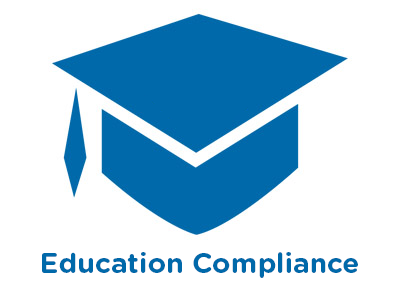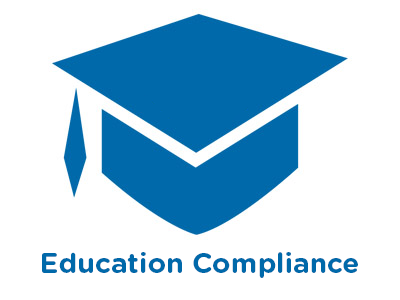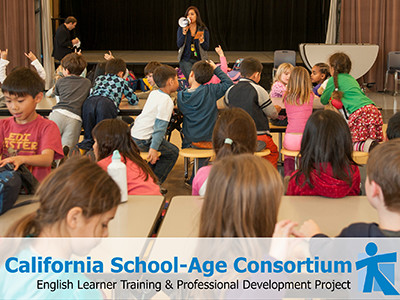 |
Job Applications |
1.00 |
In this course, you will learn the basics of completing a job application, including how to choose and secure references, tips for completing applications online, strategies for dealing with background checks with a criminal record, and more. |
 |
I Belong: Supporting Social Awareness and Interpersonal Skills |
2.00 |
We all have lived full lives with varied experiences, both positive and negative. Whether we are aware or not, our experiences, including our social, political and cultural beliefs and background, affect our practice with youth. During this course, participants will learn about how culturally grounded beliefs and background affect our practice with youth, how to help raise our awareness of those factors, and reflect on current and new strategies that support the development young people’s social-awareness and interpersonal skills. |
 |
Incentives and Motivation |
2.00 |
Motivation, incentives and rewards can help pull a team together and keep a successful staff on track. In our profession, incentives rarely come in the form of extra earnings, so we have to be creative in designing incentives. During this course, participants will look at several strategies for providing meaningful incentives for staff, as well as techniques to determine what motivates them and their staff. |
 |
Advanced Interpersonal Communication: Communication Styles and Methods (Instructor Guide) |
0.75 |
To be successful in the workplace, you must be able to effectively communicate and cooperate with clients and co-workers. Learning about the four types of communication styles helps a listener understand a speaker’s perspective. It also helps a speaker understand how their communication affects the listener.
In this course you will learn: to identify primary and secondary communication styles, and to communicate using various verbal and nonverbal modes of communication.
This Instructor's Edition of this course includes notes and suggestions to assist you in presenting the material, whether in an in-person classroom setting or as an instructor-led online or distance-learning course. It also provides you with the answers to questions found in mid-lesson activities, as well as in the quiz that concludes the course. |
 |
The Importance of Sensory-Rich Play (CDA 2) |
2.00 |
This course explores the research-backed benefits of this exciting form of play, from fostering essential developmental skills to sparking joy and curiosity. However, navigating regulations and concerns in early care settings can be tricky. Dive into practical strategies to empower young children in making choices and assessing risks amidst sensory-rich, highly physical activities, nurturing confident explorers with a deep love for learning. |
 |
Pneumothorax and Hemothorax for EMTs |
1.00 |
Paramedic Instructor Peter Bonadonna discusses some of the most life threatening chest injures. |
 |
Coaching: Fundamentals Of Coaching |
1.00 |
Coaching is the continuous effort to help employees maximize their abilities through personalized counseling and advice. The coaching process not only trains employees to become familiar with business procedures and expectations, but also motivates them to reach both individual and company goals.
Coaching is beneficial to employees because it encourages them to discover their worth and potential. Through proper coaching sessions, employees build confidence, improve their work habits, and increase their productivity.
In this course you will learn to:
1. Define coaching and identify the qualities of an effective coach
2. Build a coaching foundation and plan a coaching strategy. |
 |
Creating and Managing Budgets in School-Age Programs |
2.00 |
When program budgets are developed through a careful, step-by-step process, they become valuable planning tools. By using effective budget planning tools and strategies, school-age care professionals can make realistic projections about the programs financial stability, and design strategies for generating and allocating resources to support the programs vision and mission. It is important for school-age care professionals to understand that the budget process is ongoing. It involves linking financial goals to program goals, identifying program priorities, allocating resources effectively, using reliable methods for calculating potential expenses and revenues, monitoring performance against projections made, and making needed changes and adjustments for the future. |
 |
A Student Guide to the Clery Act |
0.50 |
The Jeanne Clery Disclosure of Campus Security Policy and Campus Crime Statistics Act, commonly known as the Clery Act, is a federal law that requires colleges and universities to track and disclose information about crimes that occur on or near campus. This course is designed to help students understand how the Clery Act impacts them and their school. |
 |
Understanding the Behavior of Children and Youth |
2.00 |
The development of children and youth can cause them to behave in ways that can be trying for even the most knowledgeable and experienced staff. When staff understands what is driving the behavior, they can help to guide and encourage acceptable behaviors. This course will provide participants with the knowledge and skills necessary to prevent unwanted behavior by meeting the needs of children and youth before they act out. |
 |
Coaching with Head and Heart |
2.00 |
Leaders and managers need strategies to support others in their own growth and development. In this course, participants will be introduced to a coaching process that supports individuals to make more conscious decisions, build off their strengths and internal resources and take new action. Participants will understand when coaching is needed, the mindset required, and the critical skills needed for effective coaching, including deep listening and inquiry. |
 |
12-Step Recovery Programs |
1.50 |
This course covers the history and philosophy behind 12-step recovery programs. |
 |
Safe Lifting Practices and Manual Material Handling |
0.75 |
This course covers methods for identifying risk factors related to lifting, carrying, and other manual material handling tasks in the workplace. It includes how to plan and apply ergonomic improvements to reduce or eliminate those risk factors, thereby avoiding injuries, injury-related expenses, and loss of productivity. It also includes a selection of example ergonomic improvements that learners might choose to implement. |
 |
MSU BLS Overview |
1.00 |
Monroe County, in Western New York, has obtained its first Mobile Stroke Unit (MSU). "The construction and operating costs of the unit, which was custom built by Frazer Ltd. in Houston, are being funded by UR Medicine and philanthropy, including a lead gift from Elena Prokupets and support from the Del Monte family and other donors in the Rochester community." We gathered members of this talented team to show you how your BLS assessment and treatment of potential stroke patients may be affected in any community that has a similar unit.
Final Exam: This multiple-choice exam is designed to test your knowledge of the material you just reviewed. You have two attempts to gain an 80% or higher on this exam. Please take your time and answer each question carefully. |
 |
Coaching: Communication |
1.00 |
Language is an important coaching tool. The use of suitable words during coaching will help you create relationships, repair employee confidence, and establish plans for employee success. As a coach, you must select words that directly influence your employees’ attitude, behavior, and performance. The use of appropriate language during your coaching sessions will help you convey your messages in a clear and encouraging manner.
In this course you will learn to: clearly express your message by using appropriate language, identify and use nonverbal methods of communication, and receive the desired information by asking effective questions. |
 |
Making Plans and Developing Policies |
2.00 |
Planning and policy-making are closely linked to the development of quality school-age care programs. When school-age staff are skilled as planners and policy-makers, they can use these skills to design and implement high quality programs that benefit children, youth, and families. It is essential for school-age care professionals to recognize that it is important for policies to grow out of a vision of quality, and a mission that supports that vision. Therefore, creating a vision for quality, developing a program philosophy, and writing a clear mission statement are the first steps in program planning. It is also important for school-age care professionals to use a systematic process to develop goals and objectives, set priorities for accomplishing goals and objectives, and develop goal-based action plans that will help the school-age program achieve its mission. High quality school-age programs are led by professionals who understand how to use effective strategies for creating a continuous cycle of planning and evaluation that supports ongoing program improvement. |
 |
A Student Guide to Fire Safety |
0.50 |
Between January 2000 and May 2015, 85 fatal fires in dorms, fraternities, sororities, and off-campus housing took the lives of 118 people. This course offers students a refresher about fire safety, including the main causes of campus fires, the actions students can take to prevent fires, and the importance of working smoke alarms and knowing two ways out.
|
 |
Presentation Methods and Debriefing Activities |
2.00 |
There is no "one size fits all" approach to working with children and youth, and this is especially true when it comes to how we present and debrief activities. During this course, participants will understand the importance of the delivery and debriefing of an activity to help children and youth make meaning, as well as some specific methods that can be incorporated into the program right away. |
 |
English Learner Socio-Emotional Factors and Typologies Review |
0.50 |
This course serves as a compliment to Knowing English Learners, an in-person training offered through CalSAC's English Learner Training and Professional Development Project. This review course is for CalSAC EL Trainers and participants. CalSAC Trainers can use this module as a way to brush up on the Socio-Emotional Factors and English Learner Typologies before conducting a training, and participants can use the module to further their understanding of the Factors and Typologies. |
 |
Business Ethics: Whistle-Blowing (Instructor Guide) |
0.75 |
In this course you will learn to: identify criteria for whistleblowing and the risks associated with it, and identify when and how to blow the whistle. |
 |
Ladder Safety |
0.75 |
This course covers safe ladder practices, common hazards when using ladders, and the proper use of different ladder types. |
 |
Sales Skills: Advanced: Effectively Closing a Sale |
0.75 |
This course will focus on demonstrating the benefits of your product or service to others, confirming the client’s commitment by recognizing and responding to signals, and closing the sale and following up with the client. |
 |
GED: Reasoning Through Language Arts - Unit 8: Post-Test |
0.25 |
Welcome to Unit 8: Post-Test. This post-test covers reading comprehension, writing, and editing. At the end of this post-test is a table that matches each question to the content it covers. Use it to review any content that you haven't mastered. |
 |
Observation and Assessment of the Learning Environment (CDA 7) |
2.00 |
Research finds that the quality of a child’s early learning environment has a significant impact on his well-being and ability to learn. This course focuses on two significant aspects of environmental quality: the relationships and rich interactions that happen in the classroom, and the physical setting and learning materials. Special emphasis is placed on observation and assessment of the learning environment to make improvements and support positive outcomes for children. The course covers how professionals who work with young children can use observation and assessment as a way to support children’s development (social, emotional, cognitive, physical, and approaches to learning), inform teaching practices, enhance interactions with children, and plan activities for young children. This course is designed to be part of a Child Development Associate (CDA) Credential™ curriculum, and covers CDA subject area 7: Observation and Assessment. It can also be taken as a stand-alone learning event or as part of a broader early childhood education curriculum. |
 |
Change Management: Managing Change |
0.50 |
This course will cover how to encourage creativity in employees and develop a commitment to change in employees. You will also learn how to communicate change effectively, improve listening skills, and control grapevine. |


























